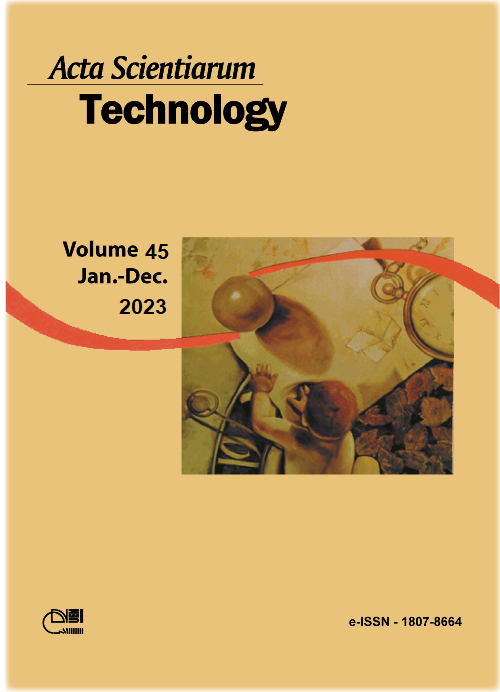Rainfall intensity model with spatialization of intensity-duration-frequency curve parameters - A case study for the state of Maranhão, Brazil
DOI:
https://doi.org/10.4025/actascitechnol.v45i1.63369Keywords:
Intense rainfall; IDF Equation; spatial variability.Abstract
The characterization of intense rainfall in engineering projects is fundamental, mainly regarding the estimate of design flows necessary for designing hydraulic works. Intense rainfall events are commonly measured by Equations and curves that relate their intensity, duration, and frequency. Such relations, known as IDF, enable the hydrological characterization of a given region. This article presents a methodological design and results from both determination and spatialization of IDF curve parameters for the state of Maranhão. Historical series of maximum daily rainfalls obtained from National Water and Sanitation Agency (ANA) were used in 126 rainfall gauge stations and the Gumbel probability distribution estimated the maximum daily rainfall for 5, 10, 15, 25, 50, and 100 return periods. The Isozonal Method obtained the IDF correlations of intense rainfall events for 0,1. 1, and 24 h durations, and their performance were conducted by Nash-Sutcliffe R2 coefficient and Root Mean Square Relative Error (RMSE). “K, a, b, and c†parameters of intense rainfall equations were determined by optimization and convergence processes and their spatialization was carried out by interpolation by Inverse Distance Weighted (IDW), which enabled to determine the values of each parameter in regions without physical measurements of rainfall. Similarly, rainfall intensity was spatialized for the entire state. According to the results, the rainfall distribution in the state of Maranhão shows a variation in the indexes of precipitation, with the highest values found in areas located in central-southern, southwestern, and southeastern regions.
Downloads
Downloads
Published
How to Cite
Issue
Section
License
DECLARATION OF ORIGINALITY AND COPYRIGHTS
I Declare that current article is original and has not been submitted for publication, in part or in whole, to any other national or international journal.
The copyrights belong exclusively to the authors. Published content is licensed under Creative Commons Attribution 4.0 (CC BY 4.0) guidelines, which allows sharing (copy and distribution of the material in any medium or format) and adaptation (remix, transform, and build upon the material) for any purpose, even commercially, under the terms of attribution.
Read this link for further information on how to use CC BY 4.0 properly.











8.png)




